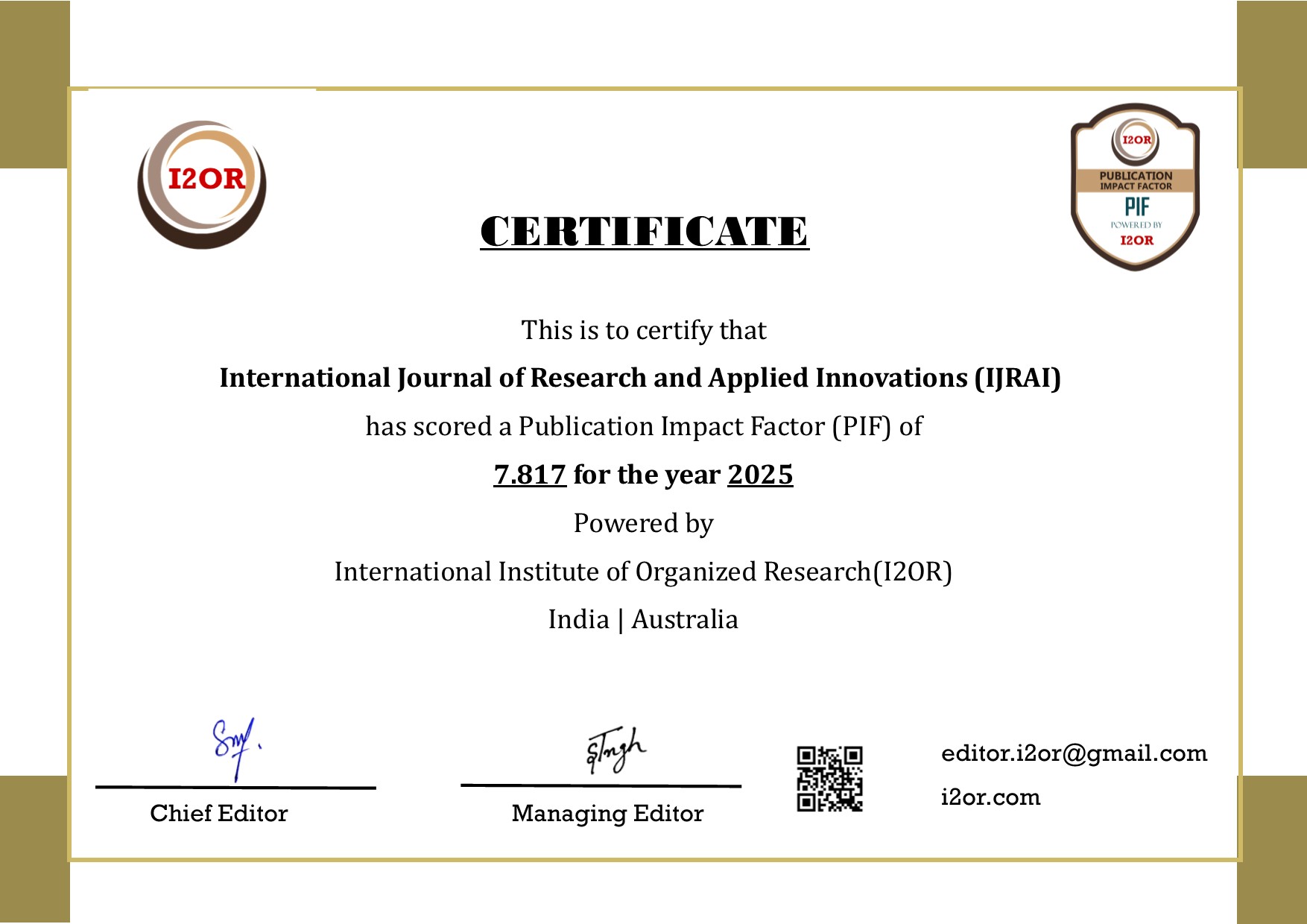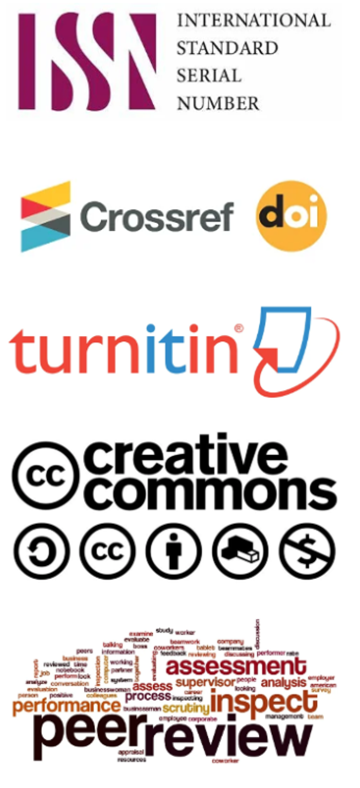Leveraging Generative AI in Cloud Environments for Secure Online Financial and SAP Data Management
DOI:
https://doi.org/10.15662/IJRAI.2022.0706013Keywords:
Generative AI, Cloud Computing, Financial Data Management, SAP Integration, Secure ETL, AI Automation, Data Security, Real-Time AnalyticsAbstract
The rapid expansion of cloud computing and artificial intelligence technologies has transformed financial data management, demanding solutions that are both secure and scalable. This paper presents a comprehensive framework that integrates generative AI within cloud environments to enhance online financial data processing and SAP system management. The proposed approach leverages AI-driven automation for data extraction, transformation, and loading (ETL), ensuring efficient handling of large-scale transactional and operational data while maintaining strict compliance with security protocols. Generative AI models are employed to intelligently analyze, predict, and optimize financial workflows, providing real-time insights and decision support. By integrating these capabilities with SAP enterprise systems, organizations can achieve seamless interoperability, improved accuracy in financial reporting, and accelerated response to market dynamics. The framework emphasizes robust encryption, access control, and continuous monitoring to safeguard sensitive financial data against cyber threats. Experimental evaluation demonstrates significant improvements in processing efficiency, data reliability, and operational security, establishing the proposed model as a viable solution for next-generation financial data management in cloud-native environments.
References
1. Brown, T., Lee, D., & Kim, S. (2023). Large language models for financial prediction. Journal of AI in Finance, 14(2), 110–127.
2. Dave, B. L. (2023). Enhancing Vendor Collaboration via an Online Automated Application Platform. International Journal of Humanities and Information Technology, 5(02), 44-52.
3. Vinay Kumar Ch, Srinivas G, Kishor Kumar A, Praveen Kumar K, Vijay Kumar A. (2021). Real-time optical wireless mobile communication with high physical layer reliability Using GRA Method. J Comp Sci Appl Inform Technol. 6(1): 1-7. DOI: 10.15226/2474-9257/6/1/00149
4. Komarina, G. B. (2024). Transforming Enterprise Decision-Making Through SAP S/4HANA Embedded Analytics Capabilities. Journal ID, 9471, 1297.
5. Chen, Y., Gupta, M., & Rahman, F. (2023). Multi-cloud AI orchestration for financial analytics. Cloud Computing Journal, 16(3), 201–218.
6. Kumbum, P. K., Adari, V. K., Chunduru, V. K., Gonepally, S., & Amuda, K. K. (2020). Artificial intelligence using TOPSIS method. International Journal of Research Publications in Engineering, Technology and Management (IJRPETM), 3(6), 4305-4311.
7. Sugumar, R. (2016). An effective encryption algorithm for multi-keyword-based top-K retrieval on cloud data. Indian Journal of Science and Technology 9 (48):1-5.
8. Adigun, P. O., Oyekanmi, T. T., & Adeniyi, A. A. (2023). Simulation Prediction of Background Radiation Using Machine Learning. New Mexico Highlands University.
9. Das, K., & Nair, V. (2023). Deep learning pipelines for financial forecasting. Information Systems Frontier, 25(2), 144–162.
10. Sugu, S. Building a distributed K-Means model for Weka using remote method invocation (RMI) feature of Java. Concurr. Comp. Pract. E 2019, 31.
11. Gupta, R., & Rahman, D. (2023). Generative adversarial networks in risk analysis. Journal of Computational Finance, 27(1), 91–108.
12. Sivaraju, P. S. (2024). PRIVATE CLOUD DATABASE CONSOLIDATION IN FINANCIAL SERVICES: A CASE STUDY OF DEUTSCHE BANK APAC MIGRATION. ITEGAM-Journal of Engineering and Technology for Industrial Applications (ITEGAM-JETIA).
13. Karvannan, R. (2023). Real‑Time Prescription Management System Intake & Billing System. International Journal of Humanities and Information Technology, 5(02), 34-43.
14. Batchu, K. C. (2022). Serverless ETL with Auto-Scaling Triggers: A Performance-Driven Design on AWS Lambda and Step Functions. International Journal of Computer Technology and Electronics Communication, 5(3), 5122-5131.
15. Abdul Azeem, M., Tanvir Rahman, A., & Ismoth, Z. (2022). BUSINESS RULES AUTOMATION THROUGH ARTIFICIAL INTELLIGENCE: IMPLICATIONS ANALYSIS AND DESIGN. International Journal of Economy and Innovation, 29, 381-404.
16. Mehta, A., & Singh, R. (2022). Cloud-enabled financial forecasting systems. Journal of Enterprise Information, 19(3), 112–129.
17. Nair, T., & Kim, S. (2024). Explainable AI for financial forecasting models. FinTech Research Review, 10(1), 55–74.
18. Modak, Rahul. "Distributed deep learning on cloud GPU clusters." (2022).
19. Devarashetty, P. K. Unlocking Long-Term Value: A Multi-Stakeholder Perspective on Post-Implementation Success in SAP ERP Systems. IJAIDR-Journal of Advances in Developmental Research, 15(1).
20. Chunduru, V. K., Gonepally, S., Amuda, K. K., Kumbum, P. K., & Adari, V. K. (2022). Evaluation of human information processing: An overview for human-computer interaction using the EDAS method. SOJ Materials Science & Engineering, 9(1), 1–9.
21. Singh, P., & Mehta, R. (2022). Cloud-driven analytics for financial institutions. Enterprise Systems Review, 18(2), 78–94.
22. Gosangi, S. R. (2024). Secure and Scalable Single Sign-On Architecture for Large-Scale Enterprise Environments. International Journal of Research Publications in Engineering, Technology and Management (IJRPETM), 7(3), 10466-10471.
23. Dr R., Sugumar (2023). Deep Fraud Net: A Deep Learning Approach for Cyber Security and Financial Fraud Detection and Classification (13th edition). Journal of Internet Services and Information Security 13 (4):138-157.
24. Thambireddy, S., Bussu, V. R. R., & Pasumarthi, A. (2022). Engineering Fail-Safe SAP Hana Operations in Enterprise Landscapes: How SUSE Extends Its Advanced High-Availability Framework to Deliver Seamless System Resilience, Automated Failover, and Continuous Business Continuity. International Journal of Research Publications in Engineering, Technology and Management (IJRPETM), 5(3), 6808-6816.
25. Rajendran, Sugumar (2023). Privacy preserving data mining using hiding maximum utility item first algorithm by means of grey wolf optimisation algorithm. Int. J. Business Intell. Data Mining 10 (2):1-20.
26. Wang, Y., Zhao, T., & Li, P. (2024). Federated AI for global financial systems. Journal of Cloud Intelligence, 12(1), 1–18.









